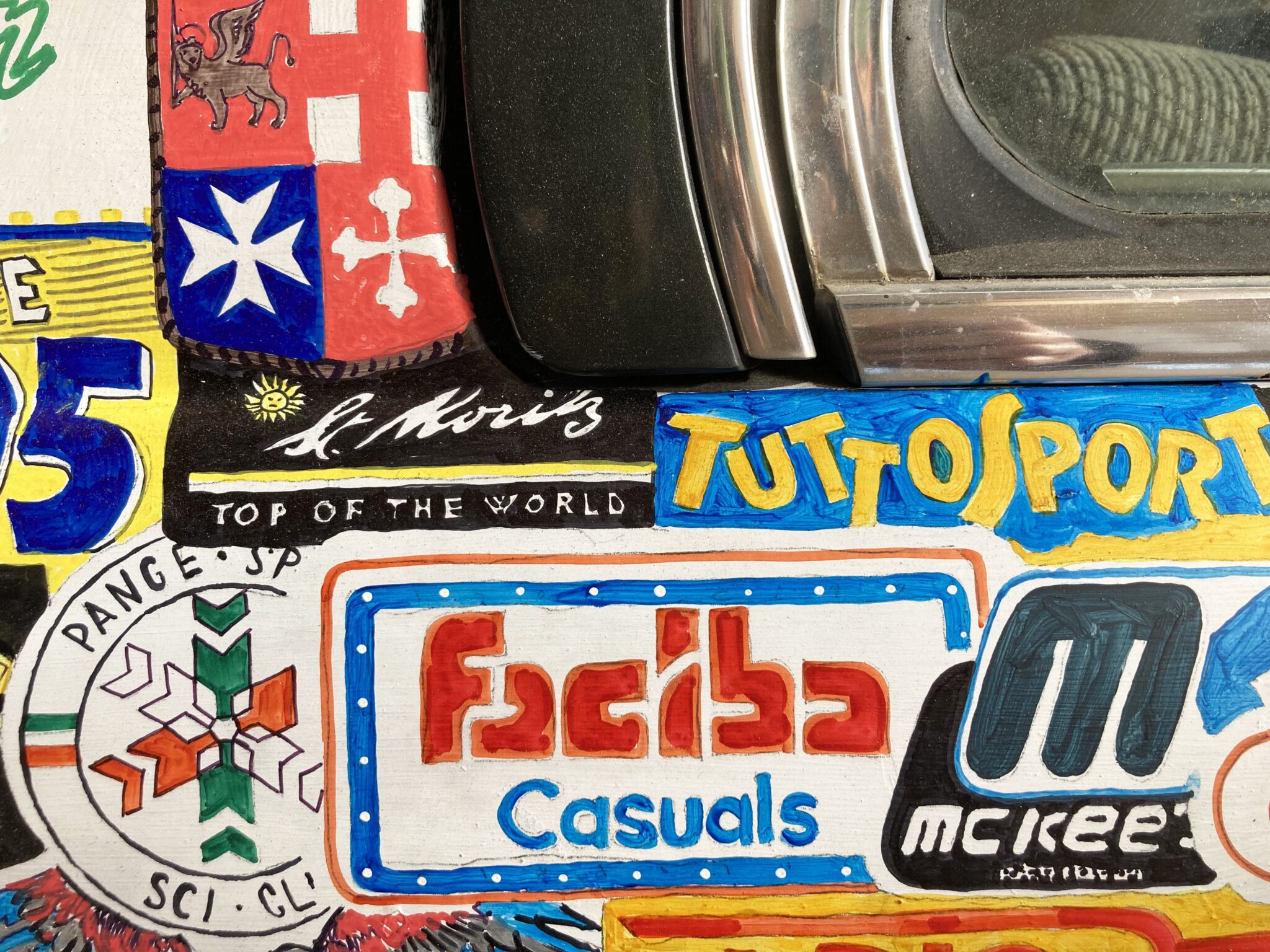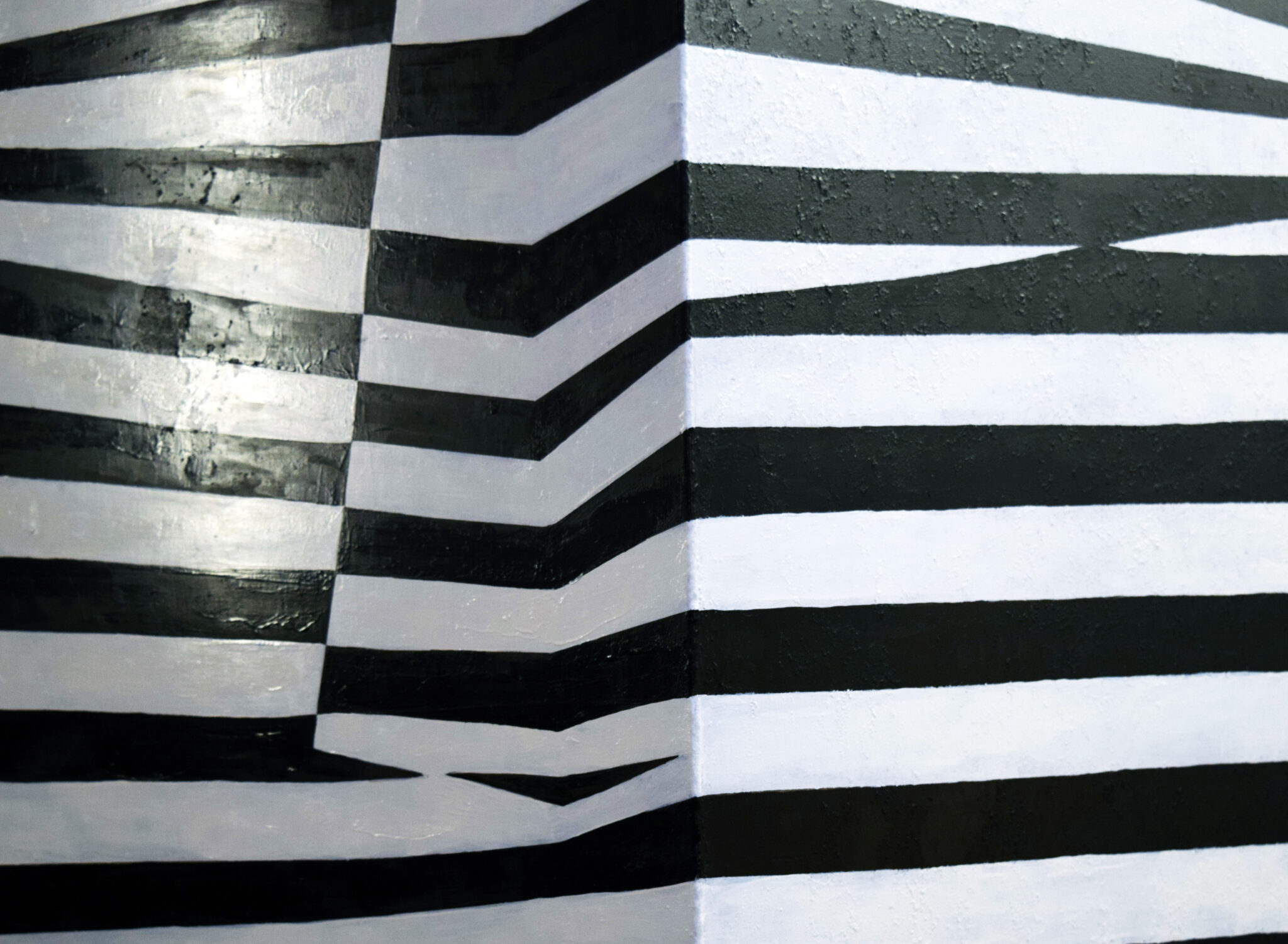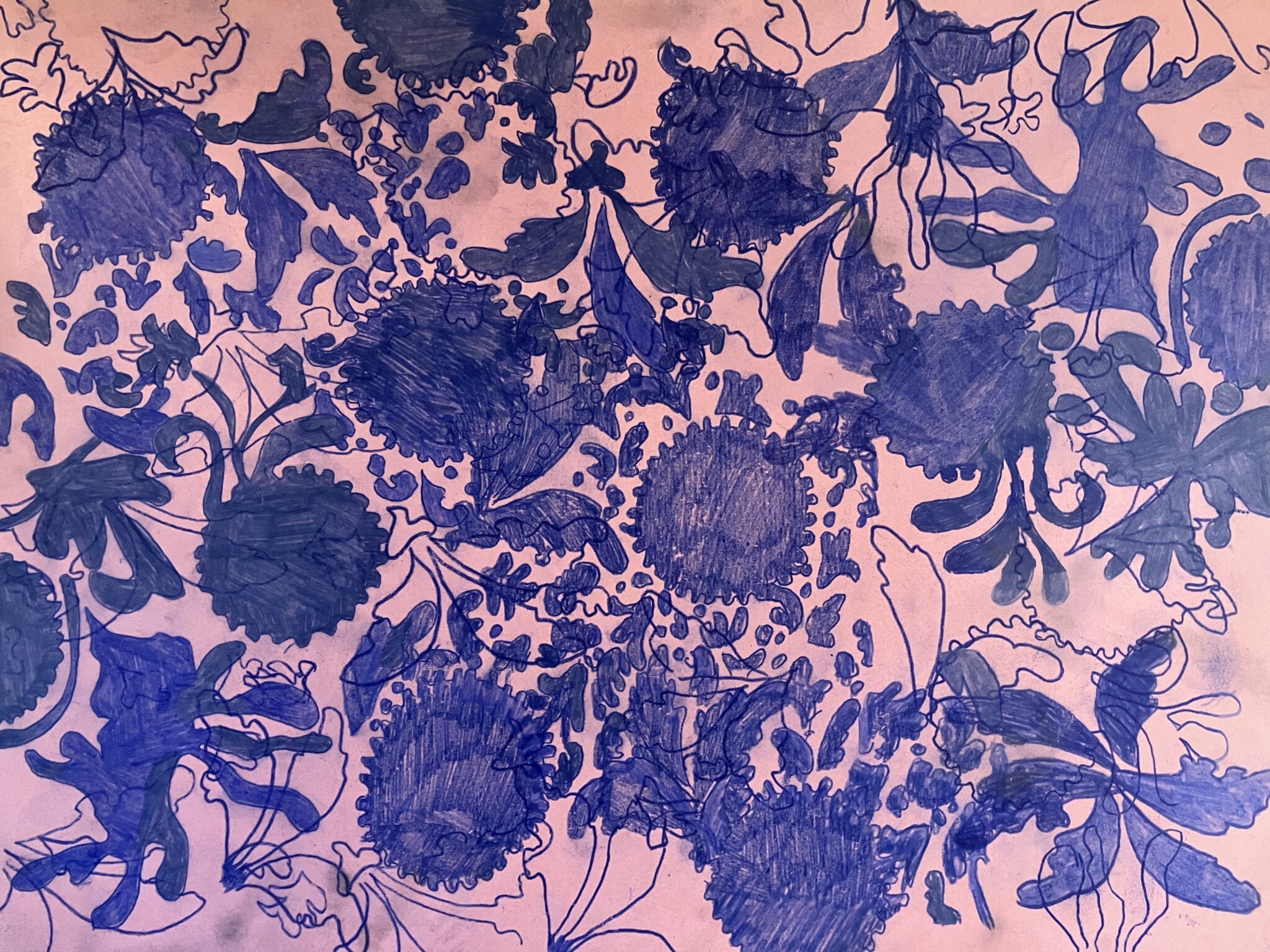Exhibition
-
Flavio Favelli
Le macchine
April 12, 2023 – April 16, 2023
With the support of Fondazione Pietro e Alberto Rossini
LoroMilano, Milan
Opening
Wednesday 12 April from 6 to 9 pm
Opening Hours
Thursday 13, Friday 14 and Saturday 15, April from 11 am to 8 pm
Sunday 16, April from 11 am to 5 pm
Free access
From the 12th to the 16th of April, as part of miart and Milano Art Week 2023, Flavio Favelli is presenting Le macchine (Cars) in the LoroMilano space (via Ugo Bassi 32), as a special project in collaboration with the Francesca Minini Gallery and with the support of the Fondazione Pietro e Alberto Rossini.
The three large sculptural works feature the automobile as their subject, the idol and simulacrum of our time, and will for five days occupy the 1000 m2 of the exhibiting space LoroMilano.
The artist started with three different automobile models (a Jaguar, a BMW and a Fiat 500) and applied enamel paint and metal sheet inserts. Stripped of their attributes to the point of rawness, “invested” and overlaid with images, the three automobiles are transformed into distorted and provocative objects, into aggregates of signs and visions.
Gran Gala is the painted body of a Jaguar XJ6 x300 from 1996, which belonged to a famous Italian singer. The car’s frame, raw and bare, without even single gram of other materials, is painted with a razzle-dazzle motif, used during World War I. Razzle-dazzle was a system of disguise featuring intersecting lines and geometric shapes, employed to confuse the observer and make it difficult to perceive the distance, speed and size of a moving object, for instance a naval ship.
Serravalle is a BMW 316 from 1983, entirely painted. Its being painted was the final act of a process that lasted several months: the entire body of the car was covered with hundreds of stickers from the 70s, 80s and 90s, which had previously been stuck to adhesive film. This film was then gradually removed to be recomposed on a panel (on display in the exhibition). Step by step, as the “skin” was removed, the image of the stickers was replicated on the body of the car. The painting is thus the “painted copy” of the original stickers.
Prussia is a dark blue Fiat 500 from the 70s, stripped down to the essentials: the windshields, windows and headlights have been removed, what’s left is a sort of skeletal-residue, in which all the “holes” have been subsequently covered up, sealed and filled with other found metal sheets.
Flavio Favelli writes:
I have an ambiguous relationship with motors, they are phantasmagorical presences.
Considering that the automobile has been a crucial thing for over a century, there have not been many artists that have used it as an object for a work of art.
If you exclude Futurisms, César, Andy Warhol… down to the famous BMW Art Cars series, still going strong today, artworks that consider the automobile, especially in Italy, when motors have a great tradition, are few and far between.
The automobile is a prothesis of mankind.
We were born with automobiles and we’ll die in automobiles.
The metal boxes are great containers of images that accompany our existence.
In our everyday language in Italy we always use the word “macchina” for cars, literally “machine”, not automobile. We’re always going by “macchina”, in what is perhaps the most seductive “thing” after weapons of war.
Press office
Sara Zolla | +39 346 8457982 | press@sarazolla.com

Flavio Favelli
Le Macchine
Vado a fare un giro in macchina diceva mio padre. Mio nonno andava in macchina ogni tanto per muoverla, perché la macchina, se sta ferma, si rovina. La macchina, insieme al denaro e alle armi, si possiede, è una realtà della psiche, una ragione di esistenza.
La potenza è nulla senza il controllo diceva una pubblicità, ma non c’è nessun controllo, perché la macchina si mangia tutto, divora in poco tempo pensieri, immagini e costumi. La macchina, più potente della rivoluzione, seduce ogni classe; è un processo epico inarrestabile, dove il mito-traguardo è come la luce dei suoi fari, illumina sempre il prossimo chilometro. La tecnologia della macchina continua il suo cammino verso la tecnologia della macchina e la sorpassa, anche se si chiama ancora ferro.
La potenza, anima della macchina, è indissolubilmente legata al potere e così all’idea di felicità. E a quello della morte; la macchina funebre deve essere ancora più bella, Jaguar e Maserati, il lusso che redime il cadavere che ha nel bagagliaio. Sulla macchina si investe la più alta ricerca per dare benessere e velocità, sfida e ostilità. La macchina è la progettazione del posto di comando alla consolle, casamatta in lamiera, che difende e offende. Questi sono gli anni del carro col pianale rialzato col muso guerriero, coi fari bianchi e gelidi, segno di esclusività accessibile, per una figura di assoluta ostilità, che domina dalla sua altezza, verso un neo futurismo col sedile riscaldabile. Nemico e preda danzano sull’autostrada contro le avversità delle regole e del clima; danza sguaiata che beffa il tutore.
Nelle nebbie di giorno, quelle bianche e abbacinanti, si ascende con brama verso il supremo sacrificio, lamiere e sangue rosso sull’asfalto nero drenante. In macchina va in scena la più grande sfida all’autorità: una perpetua e quotidiana lotta alla legge. La macchina sempre più sicura sfida la sicurezza. La macchina regina su Playmen, con le ragazze, le sigarette e il più regale dei whisky.
E il Gran Premio, spettacolo puro con il latte da campioni, Gran Turismo e la chicane, che dà brivido solo a pronunciarla.
La macchina segna il tempo che passa, i modelli scadono, desueti e superati e così il retro, il bagagliaio e le luci posteriori, figure ubique del moderno quotidiano -l’epoca della fila e del semaforo- sono i veri metri dell’immagine del tempo. Il padre della Repubblica Italiana è un designer che ha consacrato, ingiunto e indotto la macchina. In piena crisi economica, nel 1993, uscì la Punto. Mai nessuno aveva osato mettere i fari posteriori così in alto. Diceva il verbo: Fiat Punto. La risposta. Perché la macchina dà il responso. Poco prima qualcuno aveva cantato:
il motore del 2000 sarà bello e lucente
sarà veloce e silenzioso sarà un motore delicato
avrà lo scarico calibrato e un odore che non inquina.



